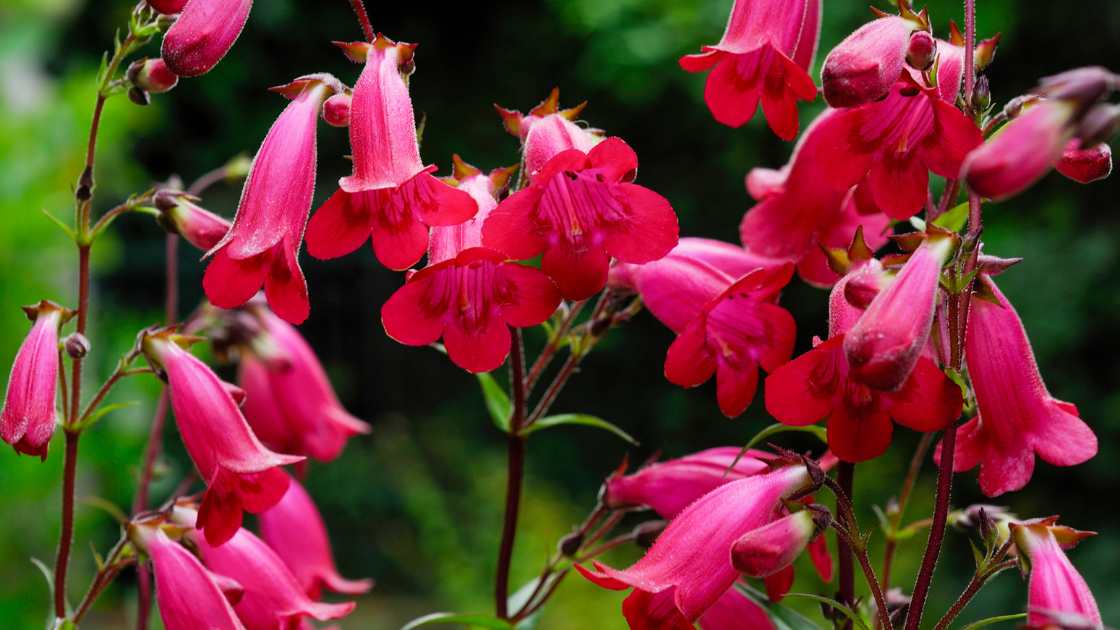Penstemon, also known as beardtongue, is a popular flowering plant that adds beauty and color to gardens. Deadheading, the process of removing spent flowers, is essential for maintaining the plant’s health and promoting continuous blooming. In this article, we will provide you with a step-by-step guide on how to deadhead penstemon effectively.
Understanding the Importance of Deadheading
Deadheading penstemon serves multiple purposes. First and foremost, it encourages the plant to produce more flowers, leading to an extended blooming period. Removing spent flowers redirects the plant’s energy from seed production to new growth and bloom development.
Furthermore, deadheading helps maintain the plant’s aesthetic appeal by preventing the formation of unsightly seed heads. It also improves air circulation around the plant, reducing the risk of fungal diseases.
Identifying the Right Time to Deadhead
The ideal time to deadhead penstemon is when the flowers have started to fade and wilt. Look for flowers that have lost their vibrant color and are beginning to wither. Deadheading at this stage ensures that you remove the spent flowers before they have a chance to develop seeds.
Regular deadheading throughout the blooming season will keep your penstemon looking neat and encourage the plant to produce new buds for continuous flowering.
Tools Needed for Deadheading Penstemon
To deadhead penstemon, you’ll need a few simple tools:
Pruning shears or sharp scissors: Choose a pair of clean, sharp pruning shears or scissors to make clean cuts without damaging the plant.
Gloves: Wearing gardening gloves will protect your hands from any thorns or prickles, especially if your penstemon variety has hairy stems.
Disinfectant: It’s a good practice to disinfect your pruning tools before and after each use to prevent the spread of diseases. You can use rubbing alcohol or a solution of one part bleach to nine parts water.
Step-by-Step Guide to Deadheading Penstemon
Follow these steps to deadhead your penstemon effectively:
Locate spent flowers – Look for flowers that have faded, wilted, or lost their vibrant color.
Position your tools – Hold your pruning shears or scissors with the blades parallel to the stem you wish to remove.
Make the cut – Position the blades just above a set of healthy leaves or a leaf node, and make a clean cut to remove the spent flower stem. Avoid cutting too close to the leaves, as this may cause damage.
Dispose of the spent flowers – Collect the removed flower stems and place them in a compost bin or dispose of them in your garden waste.
Repeat the process – Continue inspecting the plant for more spent flowers and repeat the deadheading process regularly throughout the blooming season.
Post-Deadheading Care Tips for Penstemon
After deadheading, it’s important to provide proper care to ensure the health and vitality of your penstemon:
Watering: Continue to water your penstemon regularly, ensuring the soil remains moist but not waterlogged.
Fertilizing: Apply a balanced, slow-release fertilizer according to the manufacturer’s instructions to provide the plant with essential nutrients for healthy growth.
Mulching: Apply a layer of organic mulch around the base of the plant to conserve moisture, suppress weed growth, and regulate soil temperature.
FAQs
Why is deadheading penstemon important?
Deadheading penstemon is important for several reasons. Firstly, it encourages the plant to produce more flowers, leading to an extended blooming period. Removing spent flowers redirects the plant’s energy from seed production to new growth and bloom development. Additionally, deadheading helps maintain the plant’s aesthetic appeal by preventing the formation of unsightly seed heads. It also improves air circulation around the plant, reducing the risk of fungal diseases.
When is the best time to deadhead penstemon?
The best time to deadhead penstemon is when the flowers have started to fade and wilt. Look for flowers that have lost their vibrant color and are beginning to wither. Deadheading at this stage ensures that you remove the spent flowers before they have a chance to develop seeds. Regular deadheading throughout the blooming season will keep your penstemon looking neat and encourage the plant to produce new buds for continuous flowering.
What tools do I need to deadhead penstemon?
To deadhead penstemon, you’ll need a few simple tools. Firstly, you’ll need pruning shears or sharp scissors to make clean cuts without damaging the plant. Choose a pair of clean, sharp tools that are comfortable for you to handle. Secondly, wearing gardening gloves is recommended to protect your hands from any thorns or prickles, especially if your penstemon variety has hairy stems. Lastly, it’s a good practice to have disinfectant on hand to clean your pruning tools before and after each use. This helps prevent the spread of diseases and can be done using rubbing alcohol or a solution of one part bleach to nine parts water.
Final Thoughts
Deadheading penstemon is a straightforward task that yields significant benefits for your plants. By following the step-by-step guide outlined in this article, you can maintain the beauty of your penstemon, promote continuous blooming, and ensure a healthy, thriving garden. Remember to perform regular deadheading throughout the blooming season, providing post-deadheading care to keep your penstemon in optimal condition. Happy gardening!




